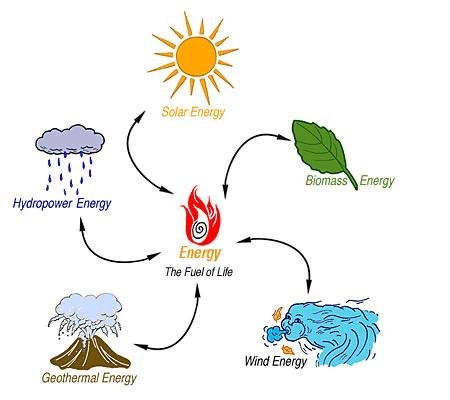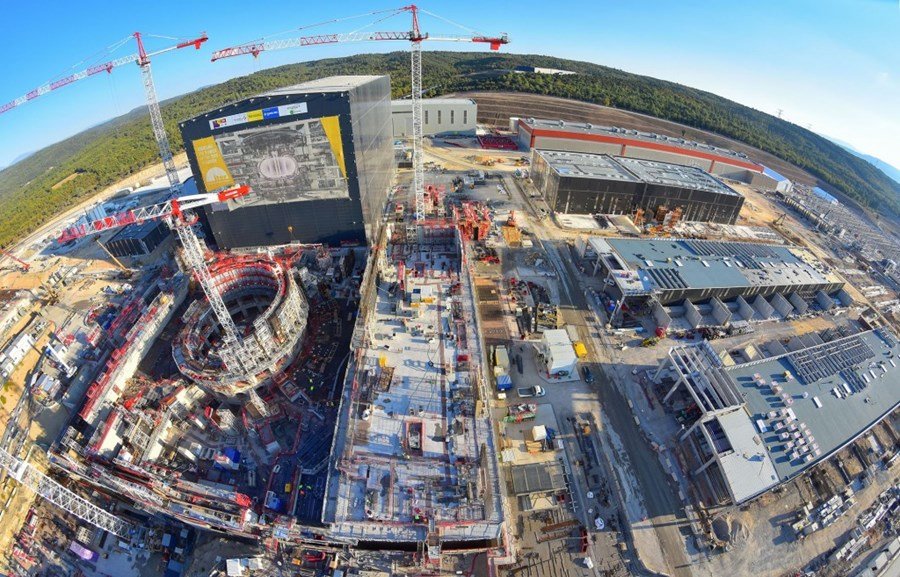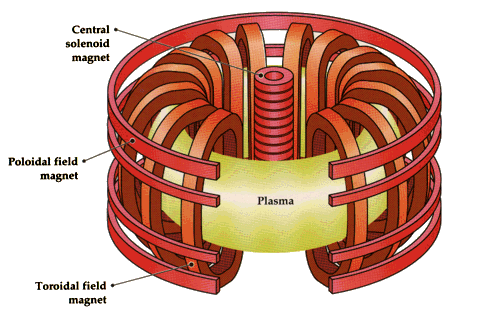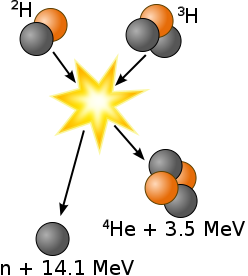Hello Steemians, today I bring to you a topic which I was planning to write about for a long time. It is about the next generation power source which is endless and clean. Extensive research on the subject is underway all over the world. The following project is a collaboration of countries all over the world to get a solution for the future power need. Lets visit it to know more about it.

Read in my high school books, “Sun is the ultimate source of energy on earth”. That was only some combination of words for me at that time. Though lately, now I understand what that sentence means. I am a product of sun and I won’t have existed in absence of sun, no one on earth could.

The discovery of fossil fuel revolutionized the way of living of the world for the last few centuries. It fueled the industrialization of the world.
But the fossil fuel reserve is getting shallow over years and is expected to run out by the next few decades. May be its nature’s blessing to us in the form of a second chance to clean our atmosphere. Alternative sources to run the world is being studied all over the world like the solar energy, wind energy and nuclear energy. Energy sources like solar energy and wind energy need large infrastructure for operation for large scale energy production and their energy yield is comparatively low. While nuclear energy need relatively smaller set up which can generate a very large amount of energy.
ITER Project:

ITER which stands for International Thermonuclear Experimental Reactor is an international nuclear fusion research program and an engineering megaproject with an eye to fulfill the energy needs of the post fossil fuel period. The project is funded by seven nations namely India, Japan, USA, China, Russia, South korea and the European Union where European Union is the host and funds the major part of the total cost. The construction of the Tokamak type fusion reactor is underway at Saint-Paul-lès-Durance, France.

The readers can know more about the project from the official website of ITER[here]

[Source: ITER]
While nuclear fission has already grown as a reliable source of clean energy, nuclear fusion is still in its infancy. The disadvantage of nuclear fission is that it produces a very large amount of radioactive wastes while the advantage of nuclear fusion is that the energy produced in this process is very large compared to nuclear fission. Also, the radioactive wastes produced in fusion process mostly have very short life.
The aim of the project is to construct a Tokamak fusion reactor and to operate it, to demonstrate the application of the experimental studies of plasma physics into a full-fledged energy production purpose through nuclear fusion.

At extreme temperatures electrons get torn apart from the nuclei and the system becomes a mixture of very high velocity electrons and nuclei. This state of the matter is called plasma and is called the fourth state of matter. The reactor is expected to produce 500 megawatts of power with only 50 megawatts to initiate it. The project started in 2013 and is expected to operate from 2025. It applies the concept of magnetic confinement plasma physics to operate it and will be the largest of its kind in terms of plasma volume used (approx. 840 cubic meters). The project will be followed by a commercial demonstration of a fusion power station named DEMO.
- Nuclear Fusion:
Nuclear fusion is an application of Einstein’s concept for mass-energy conversion,
In this process two or more atomic nuclei come close to each other and fuse together to form a larger nucleus and some subatomic particles like protons and neutrons with a release of energy. Nearly all isotopes lighter than Iron-56 and Nickel-62 which have the highest binding energy per nucleon, fuse with other isotopes, deuterium and tritium enjoys the most attention as it has the lowest activation energy (hence low temperature needed to fuse them together) and produce the largest amount of energy per unit weight.
The reaction results in a decrease in the mass in the system. This missing mass between the reactants and the products is manifested in the form of energy. The reaction needs a high energy to force the nuclei to fuse together which then yields a huge amount of energy compared to that used. This process is what powers the sun and many other stars. It seems the ITER team took it so seriously. They be like,”If sun is the ultimate source of energy, why not make a mini-sun on earth itself”.
Nuclear fusion has many other advantages. The reactants which are isotopes of hydrogen i.e. deuterium and tritium are abundant on earth. Deuterium can be easily extracted from seawater while tritium is produced in the reaction itself. Moreover, the process produces no CO2 or any other atmospheric pollutants.
The reaction is as follows:

Deuterium and tritium fuse to form a helium nucleus and a high energy neutron.
We know, like charges repel. The protons in the two nuclei repel each other while in the process of fusing together. That is why the activation energy needed in the fusion process is very high which overcomes the electrostatic repulsion between the protons and allows the two nuclei to fuse. The optimum distance between the nuclei to undergo fusion is 100 femtometers when the nuclei undergo quantum tunneling. At this condition strong nuclear force and electrostatic forces are equal and the nuclei undergo the fusion process. Magnetic confinement and high temperature is used to achieve the small separation between the nuclei in the ITER Tokamak reactor.
At such a high temperature the particles in the reactor have high kinetic energy. These particles may escape the vessel if not confined well thus decreasing the plasma temperature. In ITER reactor these particles are confined within the container vessel using magnetic field induced by some coils around the container. Charges when move though a magnetic field experience a force in the perpendicular direction of their motion. It results in a centripetal acceleration of the charge and hence the charge continues in a circular or helical motion thus getting confined in the container vessel.
The container vessel for the reactor is subject to high velocity particles like the protons, neutrons, ions and many other particles due to the high temperature which may gradually degrade the container. A strong vessel which can sustain such an environment must be designed. The tests for such container material is a part of the ITER project and the IFMIF(International Fusion Material Irradiation Facility).
The high energy neutrons which will be radiated from the plasma crossing the magnetic field without any hindrance (since it is chargeless) is the primary source of the output energy of the ITER project. This energy will then be used to run an electricity-generating turbine which will generate electricity.
The project if successful may turn into a holy-grail of energy source and will open the door for future application of nuclear fusion and plasma physics for energy production which is clean and endless. It is hoped that it will end the long debated energy shortage of the world.
References:
- Wikipedia
- The Official Website of ITER
- Enciclopedia Britannica
- Youtube Channel: Technology Update RT( Ep-67 : Way to New Energy)
- Union of Concerned Scientists : Science for Healthy Planet and Safer World
I hope you enjoyed learning about ISRO. If you love dreaming and learning science then please follow me, @physics-o-mania
Don't Forget to Read My Previous Articles :
- ISRO : The New Glamor in Space Race
- The Quest for the Grand Unification : The Theory of Everything
- Why Does it Happen?
- The Hunt for the Dark Matter : The Unseen Neighbor
- Quantum Computers : A Threat to Bitcoin
- The Strange Face of Reality : The Quantum Realm
- Einsteinian Revolution
- Teleportation : The Ultimate Revolution in Transportation
If you are interested in various domains of science and mathematics then join the @steemstem project, team to support high quality STEM(Science,Technology, Engineering and Mathematics) related contents. Join them in steemit.chat to interact with the science authors from all over the world.
Thank you for reading my content!!

